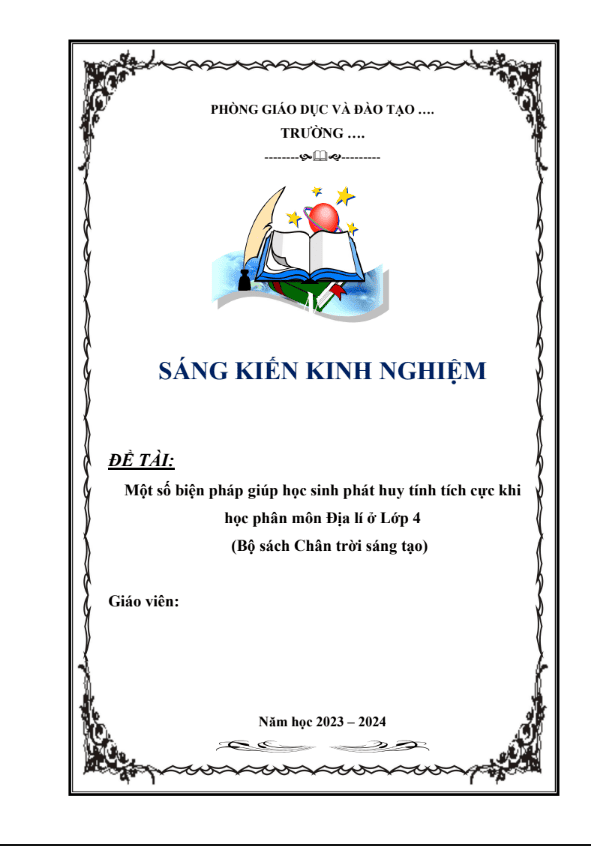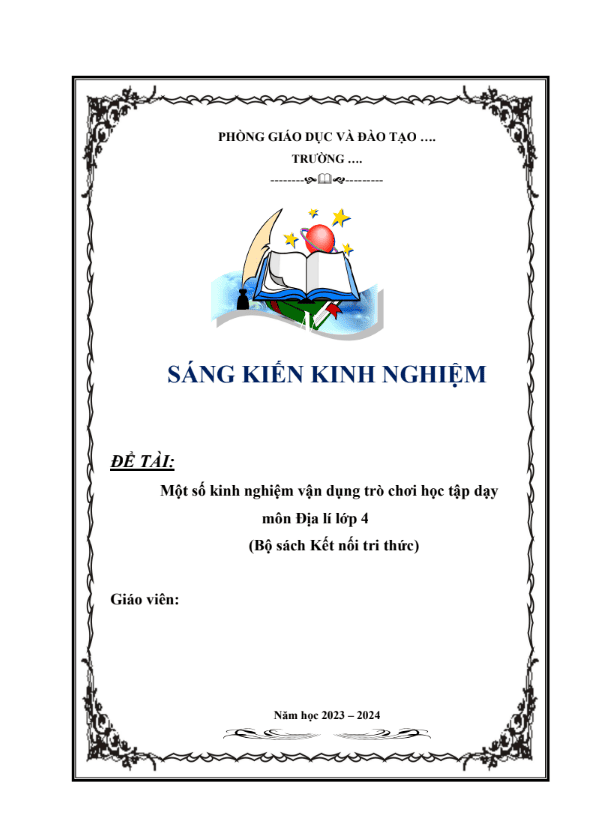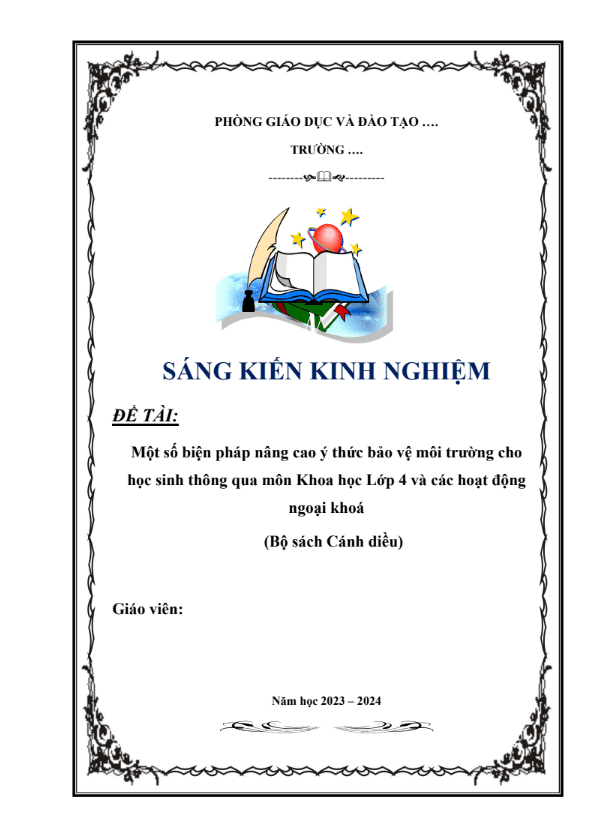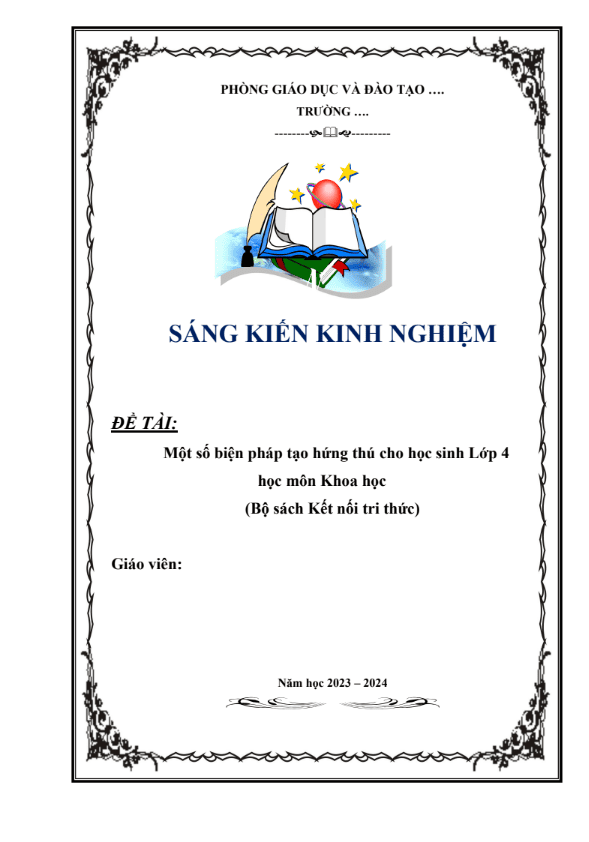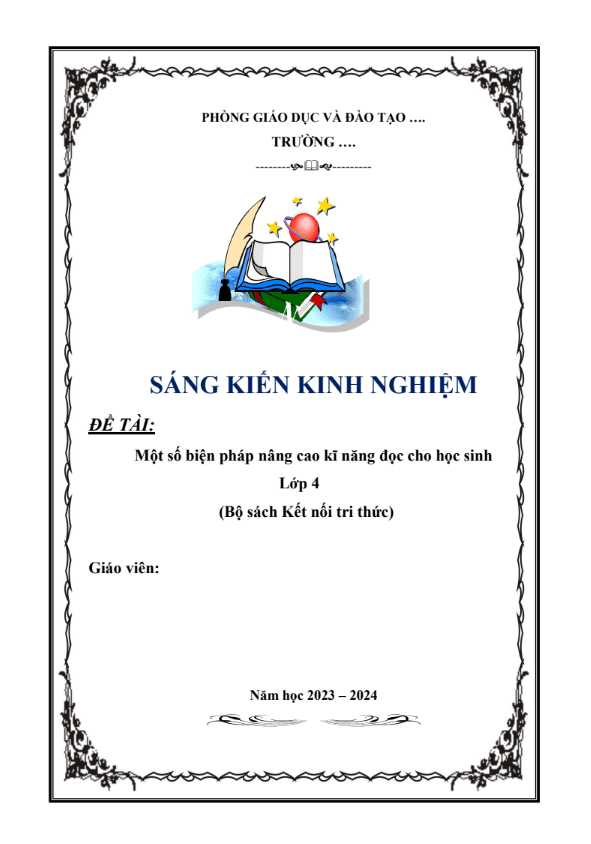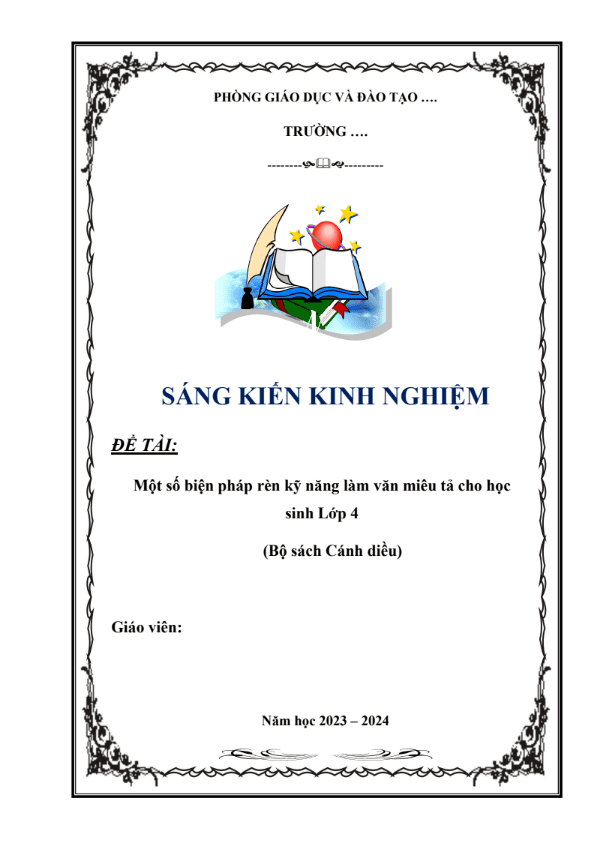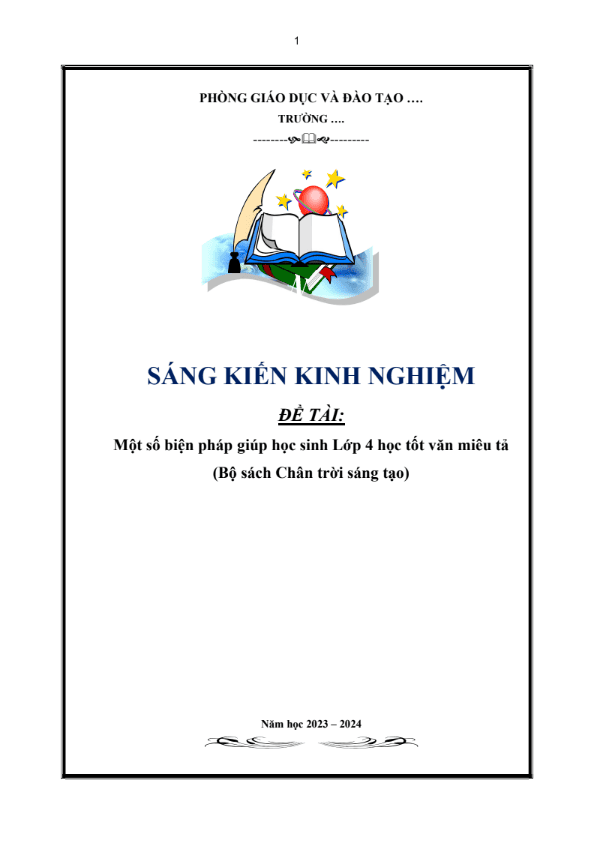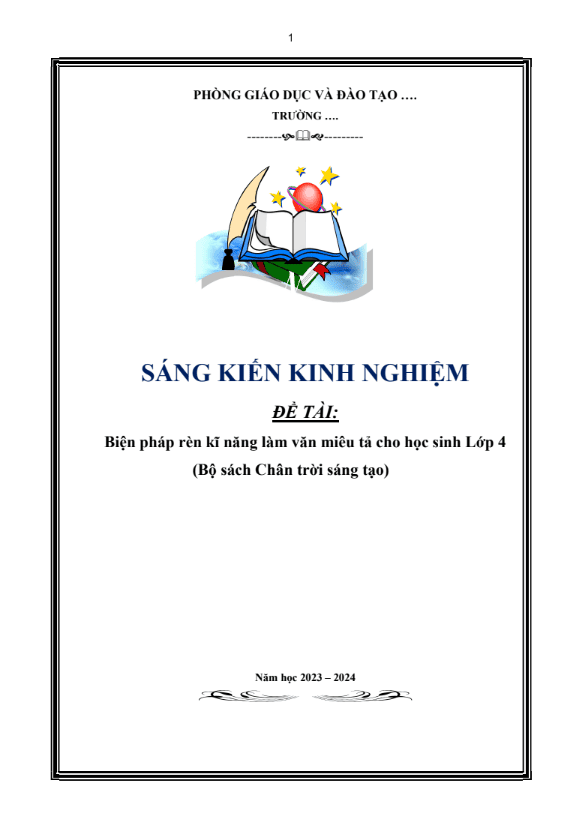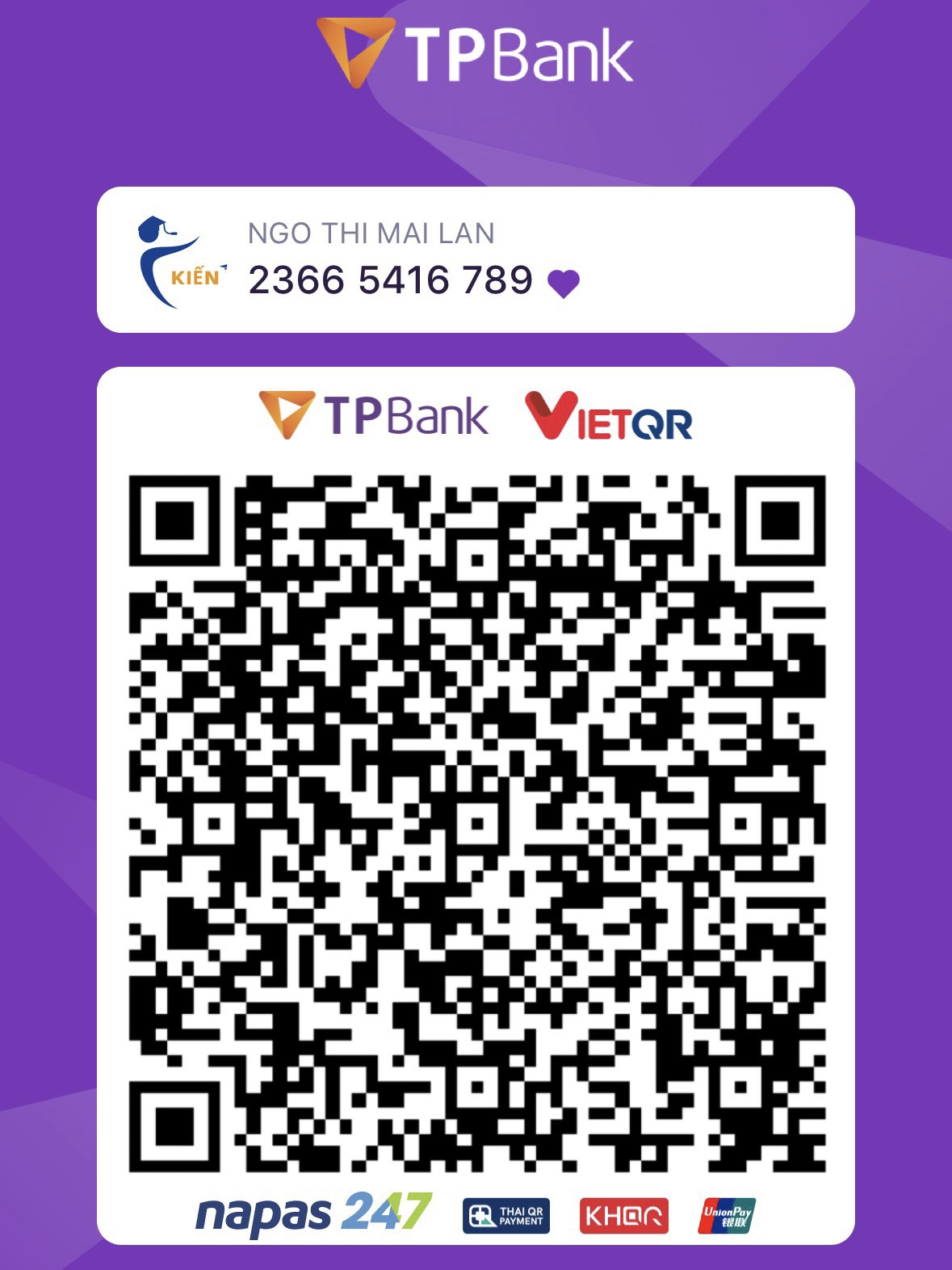SKKN Some experiences on using flashcards to teach English vocabulary for grade 3 students
- Mã tài liệu: BM3048 Copy
| Môn: | Tiếng anh |
| Lớp: | 3 |
| Bộ sách: | |
| Lượt xem: | 782 |
| Lượt tải: | 1 |
| Số trang: | 28 |
| Tác giả: | Trần Thị Bảo |
| Trình độ chuyên môn: | Cử nhân đại học |
| Đơn vị công tác: | Trường Tiểu học Hồ Văn Cường |
| Năm viết: | 2020-2021 |
| Số trang: | 28 |
| Tác giả: | Trần Thị Bảo |
| Trình độ chuyên môn: | Cử nhân đại học |
| Đơn vị công tác: | Trường Tiểu học Hồ Văn Cường |
| Năm viết: | 2020-2021 |
Sáng kiến kinh nghiệm “SKKN Some experiences on using flashcards to teach English vocabulary for grade 3 students” triển khai gồm các biện pháp nổi bật sau:
1. The stages and procedure of using flashcards to teach vocabulary
2. Some fun and exciting games & activities to teach children vocabulary using flashcards
Mô tả sản phẩm
- Introduction
1.1Rationale for chosing the topic
It’s high time to identify that vocabulary learning is crucial for learning foreign languages. According to French Allen (1983), if teachers use visual materials, students’ learning will be better than the time when they use other materials. Of all the foreign language teaching visual aids, flashcards have been proven to be an incredibly useful and flexible resource for teaching vocabulary.
Some researchers also discovered that teaching with flashcards help learners, especially young learners to acquire words more effectively. This is completely true to children who always have great love for visual things and games. Therefore, flashcards are an effective tool for teaching primary students vocabulary. Specifically speaking, flashcards are great for introducing new vocabulary, memorising, revising and consolidating vocabulary.
We are all aware of both benefits and the way of using flashcards to teach children English vocabulary. But there is a fact that flashcards are a simple, handy, versatile, valuable, yet often an underexploited resource. Being aware of the essential role of flashcards in teaching children vocabulary is the first reason why I do this study.
Children love flashcards very much but using flashcards is also one of difficult teaching techniques for Vietnamese primary teachers to master and apply it into their teaching English effectively. Besides, it’s not cheap at all for teachers to buy one set of flashcards. And it’s not easy at all for teachers to find out their suitable flashcards that can meet their aims as well as the topic of a specific lesson. Therefore, in this study I provide teachers of English with steps of using flashcards as well as some suggested activities and games using flashcards to teach children English vocabulary. In case the teachers are unable to find suitable ready-made flashcards, I also suggest here the way of making up their own flashcards to teach with the hope that they can create more effective lessons and help their children learn new words better through flashcards.
Using flashcards to teach English is really a broad issue because flashcards can be used to teach not only vocabulary but also other aspects of language. Furthermore, flashcards can be used effectively for learners of all ages and language levels and they can be useful at every stage of the class. In addition, “children” is also a broad object, so I just focus my study on grade 3 students, who are mostly in the first year of learning English and find learning new words difficult because their methods of learning vocabulary haven’t been formed. Under the limitation of time and for the main reasons as above, I decided to carry out this study and present here “ Some experiences on using flashcards to teach English vocabulary for grade 3 students”.
1.2. Objectives of the study:
This study aims at clarifying the benefits of using flashcards to teach children English vocabulary and suggesting the way flashcards can be used to help children learn new words better.
1.3. Objects of the study:
Flashcards can be used to reinforce and practice vocabulary or grammar patterns as well as giving students interesting and challenging speaking practice based on the pictures shown in the flashcards. And flashcards can be used for students of all ages and all levels. However, the main focus of this study is looking at the reasons why and the ways how flashcards should be used to help children in general and grade 3 students in particular learn new words better.
1.4.Methodology of the study:
To attain the mentioned objectives, a number of techniques will be used during the process of carrying out the study. Theoretical background of the study is based on reading, analyzing and synthesizing of the materials and relevant books. Investigating the reality and collecting the data of grade 3 students learning new words before and after using flashcards to teach vocabulary are also applied. And according to applicative approach, some activities using flashcards for some units in the textbooks Tieng Anh 3 are also applied in teaching practice.
- Development
2.1. Literature review:
2.1.1. What is a flashcard?
According to Wikipedia, the free encyclopedia, a flashcard or flash card is a card bearing information, as words or numbers, on either or both sides, used in classroom drills or in private study. One writes a question on a card and an answer overleaf. Flashcards can bear vocabulary, historical dates, formulas or any subject matter that can be learned via a question-and-answer format. Flashcards are widely used as a learning drill to aid memorization by way of spaced repetition.
2.1.2. Types of flashcards
Haycraft (1978: 102-106) states two types of flashcards. They are word flashcards and picture flashcards. Word flashcards are cards on which words have been printed. When practicing word order, the teacher can use a number of cards representing all the words in a sentence. The cards can be fixed to the board, or given to a student, and arranged correctly either by the class a whole or individual students. The word flashcards also can be used to practice structure. Then, picture flashcards are useful for presenting, practicing and revising vocabulary or as prompts for other activities – for example, to illustrate the characters in a dialogue, to help students improvise. A picture flashcard is a card which has a picture on one side and the word in the other side, or the picture and the word in one side. Picture flashcards are used for teaching and practising basic vocabulary through games. They could be pictures of animals, household objects, places, people, story characters or action verbs.
Thus, I strongly suggest we should focus on picture flashcards which can help teachers a lot with improving their students’ vocabulary. You can use small sets for individual or group activities or larger sets for display or for whole class activities.
2.1.3. Where to get flash cards?
Buy them. Some course books provide a supplementary pack of flash cards or they can be bought in sets.
Make them yourself. If you don’t have access to professionally produced flashcards, don’t worry, it’s really easy to make your own even if you’re not very artistic. You can use pictures from magazines, draw simple pictures or copy from the internet or clip art. The most important thing is to make sure they are all of the same size, on card (different colours for different sets) so you can’t see through them. If possible you can laminate the sets as you make them and they will last for years. The advantage of making your own, apart from the fact that they’re cheap and yours to keep, is that you can make sets for your specific needs. You may like to make a set to use in conjunction with a story book or graded reader, or even to accompany project work.
Students make them. I have recently begun to incorporate the production of flashcards into the classroom. After introducing a new lexical set, using realia or the course book, ask students to produce the flashcards for you. Give each one an item to draw. They can be mounted on card to make the set. By creating flashcards, students began to set their own learning goals. Students are offered a learning environment in which they are active participants rather than passive recipients of information. First, they clarify their objectives. Then they select words relevant to those objectives, choosing not only the information best suited to the flashcards, but also the level appropriate to their ability. Second, they exercise their responsibility for their own learning by developing their own flashcards.
TÀI LIỆU LIÊN QUAN
- 0
- 155
- 1
- [product_views]
- 6
- 163
- 2
- [product_views]
- 8
- 188
- 3
- [product_views]
- 3
- 125
- 4
- [product_views]
- 5
- 118
- 5
- [product_views]
- 8
- 110
- 6
- [product_views]
- 7
- 116
- 7
- [product_views]
- 0
- 188
- 8
- [product_views]
- 5
- 192
- 9
- [product_views]
- 1
- 187
- 10
- [product_views]



